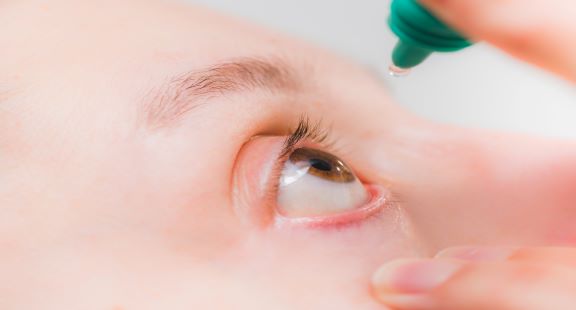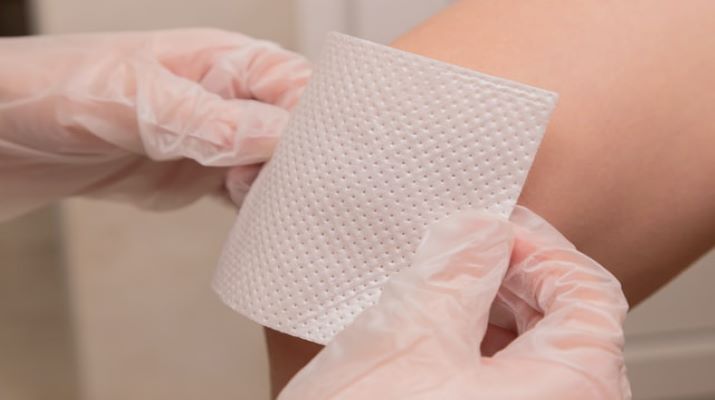
Introduction
CBD eye drops are considered favorable for treating neuropathic eye pain or diabetic retinopathy (eye complications due to diabetes).
But what are the advantages and disadvantages of CBD eye drops versus prescription eye drops?
Let’s review.
We are familiar with CBD products in the form of oils, pastes, crystals, creams, balms, patches, edibles, and more. And users have a wide variety of options to administer these formulations through different routes of administration such as oral, sublingual, topical, rectal, nasal, etc.
Along these lines, the ocular pathway supplies the desired cannabinoids through the eyes.
In general, scientific references indicate that smoking cannabis with a high content of THC reduces the intraocular pressure of glaucoma. But developing cannabis compound eye drops has been challenging due to their lipophilic nature.
Comparatively, prescription eye drops also have some trouble directing the drug to the back of the eye and providing relief from pain and inflammation of eye conditions. For example, in the case of glaucoma, the second leading cause of blindness in the United States, studies indicate that topical treatments with pharmaceutical eye drops have adverse effects.
If so, do cannabinoid-infused eye drops meet these expectations? What developments are being adopted in drug delivery to improve efficacy and relief in affected populations?
Therefore, considering this post as a short introduction to simplify our understanding of CBD eye drops, let’s review the role of cannabinoids in eye applications.
What are CBD eye drops?
Cannabidiol (CBD) infused eye drops extracted from cannabis and dissolved in mineral oil are CBD eye drops. Although it seems straightforward, research points to the complexities of this type of CBD formulation due to its lipid profile.
The 2019 Study 1 maintains that cannabidiol is a lipophilic molecule, so its topical administration to the fundus of the eye is challenging.
An ophthalmic formula must penetrate the watery layer of the tear and pass through the cornea to reach the eye. Since cannabis solutions do not dissolve in water, it is difficult for natural and synthetic cannabinoids to be effective when applied topically to the eyes.
But, contradicting the previous reference, a 2017 study 2 indicates that lipophilic drugs are well absorbed through the cornea, while both lipophilic and hydrophilic compounds are able to penetrate well through the conjunctiva and sclera.
Cannabinoids and glaucoma
The Glaucoma Research Foundation GRF defines glaucoma as a complex disease in which the optic nerve is damaged and permanent vision loss occurs.
Most importantly, this condition manifests itself with an increase in intraocular pressure (IOP). IOP depends on the balance between the amount of fluid that is produced and drained, thus maintaining adequate pressure in the eye. And this is an active and continuous process responsible for the health of the eye.
- In the first studies, carried out in 1971, it was observed that smoking marijuana showed a considerable decrease in intraocular pressure in a large percentage of participants in a clinical study.
- A 2017 study 3 compiles from several other studies that cannabinoids can potentially lower IOP through multiple mechanisms, in addition to currently available antiglaucoma drugs. One of the key deductions from this study is that THC showed beneficial effects in treating glaucoma and neuroprotective actions in treating eye diseases.
- Taking into account that cannabinoids are not soluble in water, researchers at the University of British Columbia have created an eye drop with nanoparticle technology.
- The study has produced nanoparticles charged with CBGA to penetrate the cornea. This new formula forms a lens in the eye once administered and then slowly begins to release cannabinoids.
When the drop is administered into the eye, it remains in a liquid state, until it equilibrates with the temperature of the ocular surface. It then transforms into a gel state, taking the form of a lens. This lens slowly releases CBGA and takes eight hours to dissolve in the eye.
- Exogenous cannabinoids, THC and CBD , contain properties capable of causing structural and functional changes in the retina.
- The study favors the use of synthetic cannabinoids in therapeutic applications to cure and prevent retinal diseases.
- Similarly, the 2019 5 animal model study on CBD analog derivatives showed that CBD analogs showed greater penetration into ocular tissues.
Further reading: CBD for glaucoma
Does CBD reduce eye pressure?
According to the American Academy of Ophthalmology (AAO), studies propose that CBD does not lower IOP but rather increases it.
In addition, it is worth mentioning here the reference of two studies.
1. 2018 study 6 tested and compared IOP results in rats after independently administering eye drops containing THC and CBD.
The following observations have been recorded.
THC results
- When eye drops containing THC were applied, IOP decreased 30% in eight hours.
- The effect of THC depended on sex. Female rats showed no effect on IOP after eight hours, but a moderate decrease in IOP after four hours.
- Male rats retained the effects of THC for 8 hours, while female rats for 4 hours.
CBD results
- IOP increased significantly in male and female mice in the first and fourth hours after administration of the CBD eye drops.
THC and CBD results
- The combined administration of THC and CBD did not show any reduction in IOP in male rats.
2. A 2006 randomized study 7 examined IOP levels in six glaucoma patients after sublingual administration of THC and CBD. In this case, results similar to those of the previous study are also reported. These are:
- IOP was substantially reduced within two hours after sublingual administration of 5 mg of THC and was well tolerated by the patients.
- Sublingual administration of 20 mg CBD did not lower IOP.
- A higher dose of 40 mg of CBD showed a brief rise in IOP at 4 hours.
Are CBD Eye Drops Safe?
From the discussions above, we can perceive that the research so far shows mixed results on the effect of CBD eye drops. Furthermore, research in this area is complicated, expensive, and time-consuming. Therefore, it is difficult to draw a conclusion as to whether CBD as eye drops is safe to use.
Furthermore, a 2019 study 8 notes that while the use of CBD for various diseases is growing, it lacks sufficient scientific evidence to demonstrate its efficacy.
In general, although CBD has a good safety profile, some adverse effects of its intake can be drug interactions induced by CBD, diarrhea, fatigue, vomiting, hypersomnia or excess drowsiness and abnormalities in the liver.
CBD drops and dry eyes
There are quite a few things to consider before tackling CBD and dry eyes.
- First of all, it is essential to determine the cause of dry eyes. Is the condition the result of using CBD, THC, or both?
- Dry eye syndrome is typical in glaucoma. 40-50% of glaucoma patients experience dry eyes.
- Immune system disorders, such as Sjogren’s Syndrome, are associated with symptoms of dry eyes and mouth. The most common causes are rheumatoid arthritis and lupus.
- Xerostomia, or dry mouth, is an adverse side effect for people who use marijuana.
- Long-term use of glaucoma eye drops, prescription drugs such as antihistamines, and antidepressants.
Can CBD oil be used as eye drops?
There is little to no reference to the use of CBD in its oil formulation for topical eye applications. The previous reference to several studies we have discussed has highlighted the implications of using CBD on eye pressure. But there is no specific mention of CBD oil.
Also, when it comes to the lipophilic nature of CBD oil and its compatibility with the eyes, more qualitative evidence is needed.
A textual reference 9 discusses that a non-randomized study in healthy volunteers compared to glaucoma patients showed temporary IOP reductions with oral, topical eye drops, and intravenous cannabinoid administration. And he also notes that systematic reviews concluded that the trial was unclear.
Again, in the reference above, none of the trials have mentioned the use of CBD oil as eye drops.
CBD eye drops for macular degeneration
Another possible application of cannabinoids in eye health is macular degeneration (DM), another leading cause of vision loss in the United States.
The “macula” is the central region of the retina, which controls our sharp focus. All our activities, reading, recognizing, capturing images, involve macular functioning. Deterioration of this region causes macular degeneration that leads to loss of central vision.
According to a 2008 study 10 the abundant growth of vascular endothelial growth factor (VEGF) proteins is the main cause of abnormal growth of blood vessels in the retina.
Anecdotal evidence reference from a patient suffering from DM reports that after administering sublingual CBD oil, the severity of DM decreased. The patient observed improvements in her intermediate DM condition at an early stage of DM.
The ocular endocannabinoid system
Briefly summarizing the key points from the 2016 study 4 :
- The retina is an extension of the Central Nervous System (CNS)
- The study identifies the presence of cannabinoid systems in ocular tissues.
- The receptors, ligands, and enzymes that make up the endocannabinoid system are expressed in the retina.
Furthermore, a recent study 11 confirms that the endocannabinoid system (SEC) plays a crucial role in regulating inflammation, tissue repair, and perception of pain in the conjunctiva and cornea in humans.
In short, we can generalize that SEC plays an important role in the ocular immune response. Along the same lines, the 2016 study 12 proposes the need for additional studies focused on the therapeutic potential of ECS modulatory drugs in ocular diseases.
Conclution
- Treating eye conditions with cannabinoids is complex. There are many unknowns about the dose, frequency, routes of administration, formulation, etc. More research is needed focused on the anti-inflammatory and neuroprotective properties of cannabinoids.
- Nanotechnology shows promising potential in delivering lipophilic drugs to the human body with better bioavailability.
- People affected by glaucoma, macular degeneration, pain, and inflammation experience serious side effects due to prolonged intake of prescription drugs. Despite the side effects, medications fail to relieve pain. The application of nanotechnology and novel drug delivery in plant extracts could improve bioavailability and benefit affected populations.
- Synthetic cannabinoids show encouraging results for the use and prevention of retinal diseases.
- CBD products have flooded the market, and users looking for alternatives to prescription drugs are excited to try them to control their lifestyle. But from a practical point of view, doctors are reluctant to recommend cannabinoid therapy due to quality issues. Some of the main concerns affecting the regulation of CBD-based products are the presence of high levels of pesticides, heavy metals, and incorrect amounts of CBD indicated on the labels.
- Therefore, users should be careful when purchasing CBD products. Manufacturers must apply ethical business practices and standards to ensure that they supply high-quality products to market.
References
- Taskar P, Adelli G, Patil A, Lakhani P, Ashour E, Gul W, ElSohly M, Majumdar S. Analog Derivatization of Cannabidiol for Improved Ocular Permeation. J Ocul Pharmacol Ther. 2019 Jun; 35 (5): 301-310. doi: 10.1089 / jop.2018.0141. Epub 2019 Apr 18. PMID: 30998110 [ ]
- Vaajanen A, Vapetalo H. A Single Drop in the Eye – Effects on the Whole Body ?. Open Ophthalmol J. 2017; 11: 305-314. Published 2017 Oct 31. doi: 10.2174 / 1874364101711010305 [
]
- Adelli, Goutham & Bhagav, Prakash & Repka, MA & Gul, Waseem & Elsohly, Mahmoud & Majumdar, S .. (2017). Chapter 78. Ocular Delivery of Tetrahydrocannabinol. 10.1016 / B978-0-12-800756-3.00089-2 [
]
- Thomas Schwitzer, Raymund Schwan, Karine Angioi-Duprez, Anne Giersch, Vincent Laprevote, “The Endocannabinoid System in the Retina: From Physiology to Practical and Therapeutic Applications”, Neural Plasticity, vol. 2016, Article ID 2916732, 10 pages, 2016 [
] [
]
- Taskar P, Adelli G, Patil A, Lakhani P, Ashour E, Gul W, ElSohly M, Majumdar S. Analog Derivatization of Cannabidiol for Improved Ocular Permeation. J Ocul Pharmacol Ther. 2019 Jun; 35 (5): 301-310. doi: 10.1089 / jop.2018.0141. Epub 2019 Apr 18. PMID: 30998110 [
]
- Sally Miller, Laura Daily, Emma Leishman, Heather Bradshaw, Alex Striker; Δ9-Tetrahydrocannabinol and Cannabidiol differentially regulate intraocular pressure. Invest. Ophthalmol. Vis. Sci. 2018; 59 (15): 5904-5911 [
]
- Tomida I, Azuara-Blanco A, House H, Flint M, Pertwee RG, Robson PJ. Effect of sublingual application of cannabinoids on intraocular pressure: a pilot study. JGlaucoma. 2006Oct; 15 (5): 349-53 [
]
- Huestis MA, Solimini R, Pichini S, Pacifici R, Carlier J, Busardò FP. Adverse effects and toxicity of cannabidiol. Curr Neuropharmacol. 2019; 17 (10): 974-989 [
]
- National Academies of Sciences, Engineering, and Medicine; Health and Medicine Division; Board on Population Health and Public Health Practice; Committee on the Health Effects of Marijuana: An Evidence Review and Research Agenda. The Health Effects of Cannabis and Cannabinoids: The Current State of Evidence and Recommendations for Research. Washington (DC): National Academies Press (US); 2017 Jan 12. 4, Therapeutic Effects of Cannabis and Cannabinoids [
]
- Penn JS, Madan A, Caldwell RB, Bartoli M, Caldwell RW, Hartnett ME. Vascular endothelial growth factor in eye disease. Prog Retin Eye Res. 2008; 27 (4): 331-371. doi: 10.1016 / j.preteyeres.2008.05.001 [
]
- Aiello F, Gallo Afflitto G, Li JO, Martucci A, Cesareo M, Nucci C. CannabinEYEds: The Endocannabinoid System as a Regulator of the Ocular Surface Nociception, Inflammatory Response, Neovascularization, and Wound Healing. J Clin Med. 2020; 9 (12): 4036. Published 2020 Dec 14. doi: 10.3390 / jcm9124036 [
]
- Cairns, E., Toguri, J., Porter, R., Szczesniak, A. & Kelly, M. (2016). Seeing over the horizon – targeting the endocannabinoid system for the treatment of ocular disease. Journal of Basic and Clinical Physiology and Pharmacology, 27 (3), 253-265 [
]
Connect with other CBD users on Facebook
Do you want to benefit from the experience of other CBD users? Have questions about CBD? There is an active CBD group on Facebook.









